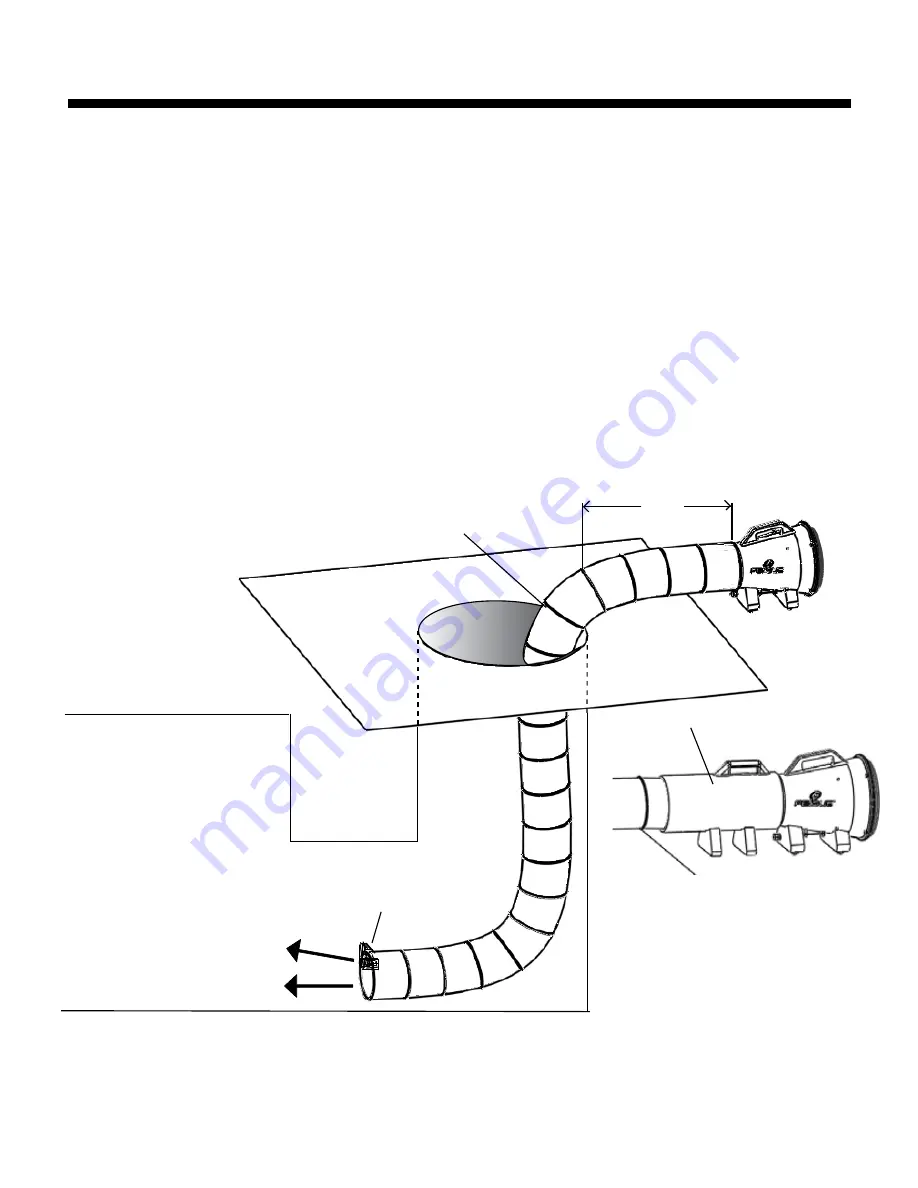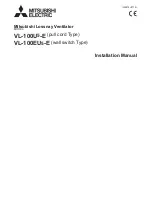
#110731-001 Product Manual - Model #1475D & #1485D Axial 'AIRPAC' Ventilator
- Revision 05 - Date 03-04-2014
Page 17
5.2 - Start-Up & Operating Procedures
(continued)
Figure #5.2b:
Axial Ventilator
Setup in Confined Space
Confined Space
Airflow
1.5 m
Air Flow Alarm (Optional)
!WARNING!
- The user must
ensure that the power cord is cor-
rectly installed in order to prevent
damage to the product and injury
to the operator.
Airpac
Ventilation Hose
2. Setup of #1475D & #1485D Axial "AIRPAC" Ventilator:
Choose a location where installation will provide suitable proximity to the work area yet minimize obstructions during use
and in the event a rescue is necessary. Once a location is chosen;
Ventilator should be placed 1.5 meters upwind where possible, from the confined space, and have its inlet pointed
a.
into the wind. This will reduce the chance of contamination being blown into the confined space.
(Refer to Fig. #5.2b)
Connect the ventilator to a suitable 12VDC power source as described in section 5.1
b.
Extend and place the ventilator hose as required.
c.
When ventilator operation is no longer required, unplug the power cord. Coil and store the power cord in the open-
d.
ing of the molded handle, or wrap the cord around the molded legs.
Important Notes:
During confined space entry operations, it should not be assumed that the ventilator will maintain the air inside
-
the confined space at a safe condition. When the ventilator is in use, the air inside the confined space should be
monitored continuously for the presence of poisonous gases and/or toxic fumes.
Ensure that the ventilator provides positive airflow the entire time during usage. The axial ventilator can be used
-
with an accessory Pelsue Air Flow Alarm (#FLO-CHEk) in order to alert the entrants that positive ventilation is
lost.
The Axial ventilator can also be used in conjunction with a Pelsue Airpac that connects to the ventilator and has
-
storage built-in for the hose.




































